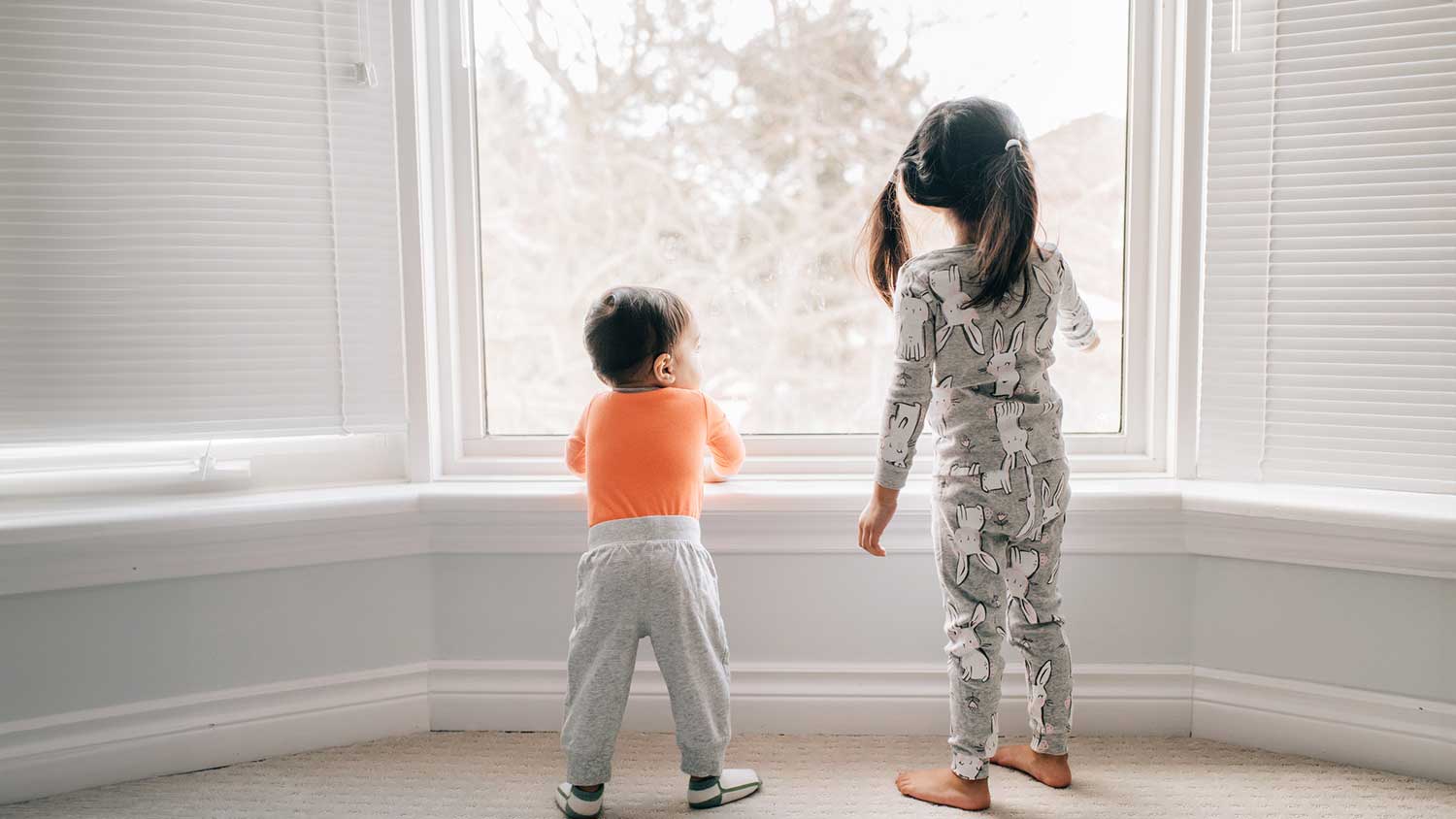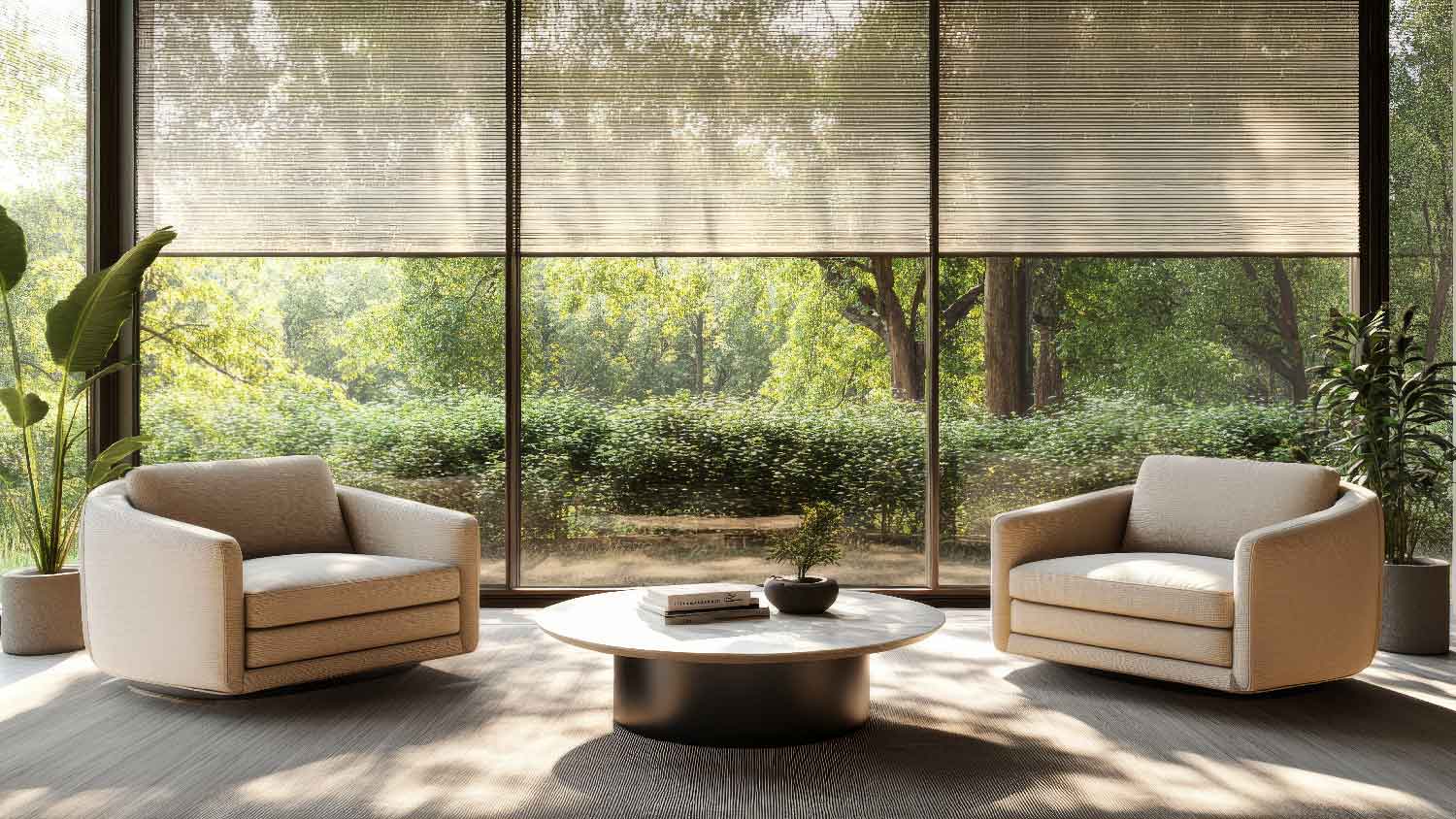How Much Do Windows Cost by Size?
The average window $750, but it can range from $300 to $3,500, depending on factors like size, material, and installation complexity.
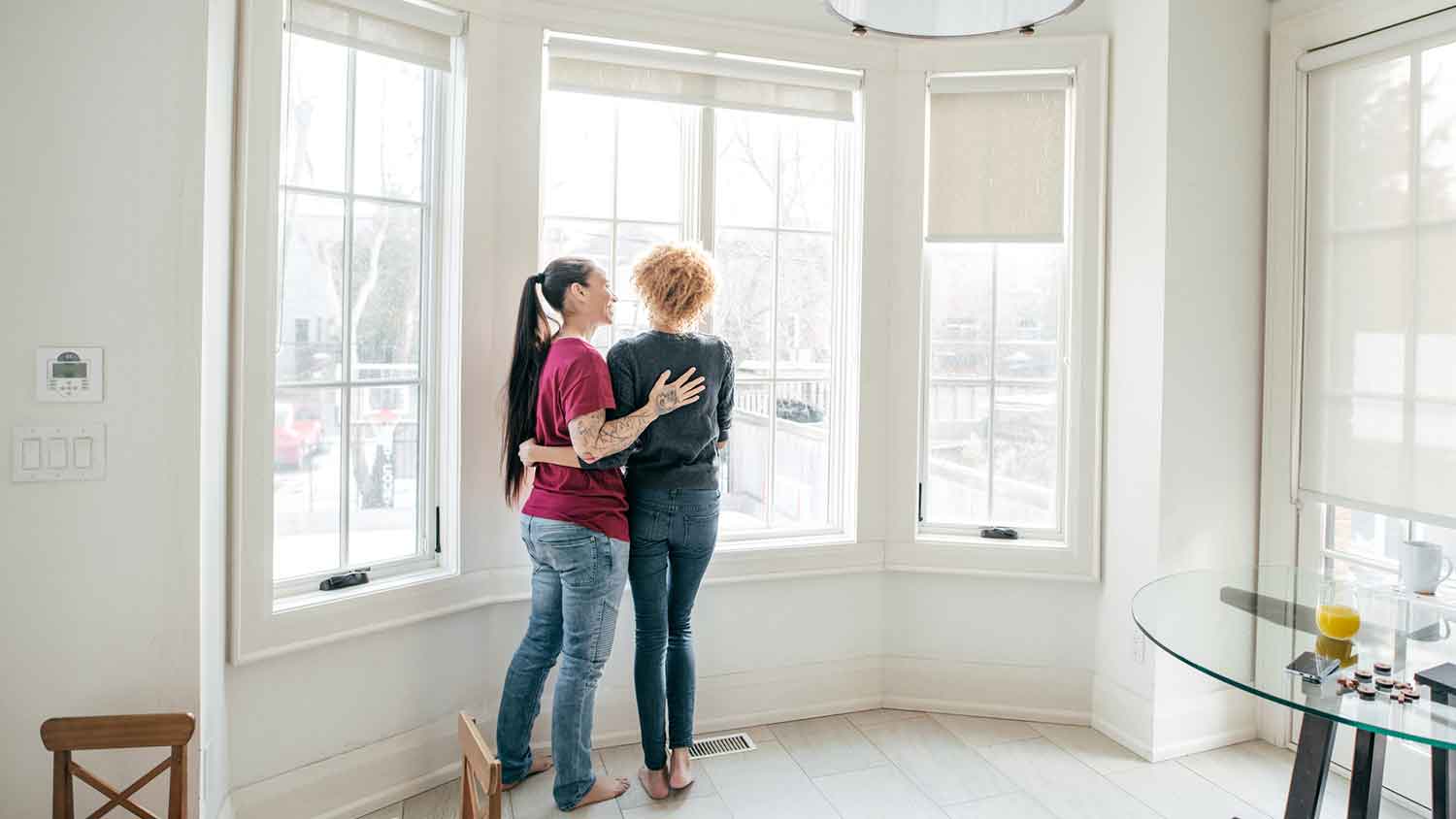

The average window costs $750, though homeowners typically spend between $300 and $3,500. Window prices depend on factors like size, materials, and installation complexity. Standard sizes and vinyl frames are more affordable, while custom designs and energy-efficient options increase costs. Whether you’re installing one window or upgrading your entire home, understanding these factors can help you budget wisely.
Window Cost Factors
The cost of new windows varies widely based on factors like size, type, materials, labor, and installation complexity. Larger windows, high-end materials, and intricate designs typically cost more, while standard replacements in existing openings tend to be more budget-friendly.
Size
When it comes to window prices, size matters—a lot. Generally, the bigger the window, the more it costs. Bigger windows don’t just use more glass; they often require stronger frames, extra insulation, and sometimes structural reinforcements to prevent sagging or drafts. They also take longer to install.
For instance, a small bathroom window is light enough that a single installer can handle it solo. But adding a massive floor-to-ceiling picture window to your living room often means that you need a new, reinforced frame, possibly new support beams, and a crew of workers to get it in place.
The chart below gives you a rough idea of what different window sizes might cost, but keep in mind that lots of other factors affect window costs as well.
| Window Size and Use | Typical Dimensions | Average Cost |
|---|---|---|
| Tiny (basement, small bathroom) | 12" x 18" to 18" x 24" | $150–$500 |
| Small (bathroom, laundry room, small bedroom) | 18" x 24" to 24" x 36" | $200–$600 |
| Medium (standard bedroom, home office) | 30" x 36" to 36" x 48" | $300–$800 |
| Large (living room, primary bedroom) | 48" x 60" to 60" x 72" | $700–$1,800 |
| Extra large (large picture and sliding windows) | 60" x 72" to 72" x 84" | $1,500–$3,500 |
| Oversized (custom, floor to ceiling) | 72" x 96" or larger | $2,500+ |
Type
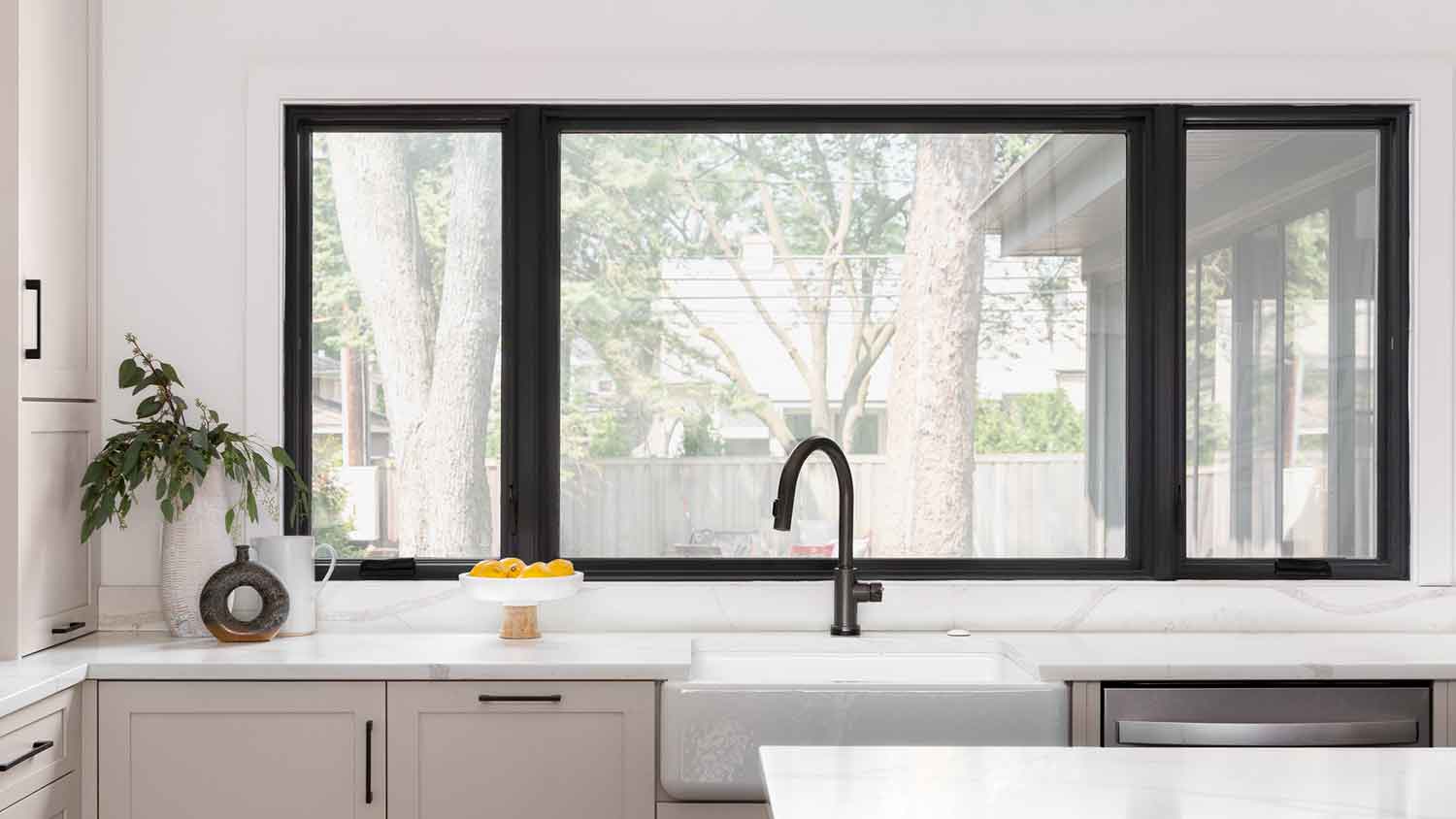
The type of window you choose plays a major role in both aesthetics and cost. Some are simple to install, while others require more complex installation and custom framing, which can drive up the price quite a bit.
| Window Type | Cost Range |
|---|---|
| Single hung | $200–$600 |
| Double hung | $300–$900 |
| Sliding | $300–$1,000 |
| Casement | $350–$1,500 |
| Awning | $250–$1,200 |
| Picture | $600–$2,500 |
| Bay | $1,200–$4,500 |
| Bow | $1,500–$6,000 |
| Egress | $400–$1,500 |
Single-hung Windows
Single-hung windows are one of the most budget-friendly options, typically costing between $200 and $600 installed. Only the bottom sash moves while the top remains fixed, making them a simple, low-maintenance choice.
Double-hung Windows
Double-hung windows cost between $300 and $900 and offer more versatility than single-hung windows. Both the top and bottom sashes move, allowing for better airflow and easier cleaning. This makes them one of the most popular choices for residential homes.
Sliding
Sliding windows generally cost $300 to $1,000. They open by sliding horizontally rather than up and down. They’re a great option for wide openings, but only half of the window can open at a time, which limits ventilation compared to other styles.
Casement
Casement windows typically range from $350 to $1,500. They’re hinged on the side and open outward with a crank. They seal tightly when closed, making them one of the most energy-efficient options.
Awning
Awning windows range from $250 to $1,200. They’re hinged at the top and tilt outward from the bottom. This design allows for ventilation even in rainy weather, making them a practical choice for wetter climates.
Picture
Picture windows, which cost between $600 and $2,500, don’t open as they’re designed purely for natural light and unobstructed views. Since they don’t open, they offer excellent insulation and lower maintenance than other types. While the glass itself is relatively affordable, larger sizes and heavy panes can drive up installation costs.
Bay
Bay windows, which range from $1,200 to $4,500, are made up of three panels that project outward, creating extra space inside and allowing more light into a room. Their design requires additional structural support, making installation more complex and costly than standard windows.
Bow
Bow windows, typically costing $1,500 to $6,000, are similar to bay windows but use four or more panels to create a more curved appearance. The larger size and increased framing requirements make them more expensive.
Egress
Egress windows range from $400 to $1,500. They’re designed to serve as emergency exits in basements or bedrooms. Since they must meet specific size regulations, installation can be more complex.
Materials
The material you choose for your window frames significantly impacts costs. Some materials, like vinyl, are affordable and low-maintenance but not as long-lasting, while others, like wood, require more upkeep and a bigger budget. High-end materials like fiberglass or composite cost more up front but usually offer better insulation and longer lifespans.
| Frame Material | Average Cost (per Window, Installed) |
|---|---|
| Vinyl | $200–$800 |
| Aluminum | $250–$1,200 |
| Wood | $300–$1,500 |
| Fiberglass | $300–$2,000 |
| Composite | $500–$2,500 |
| Steel | $750–$4,000 |
Labor
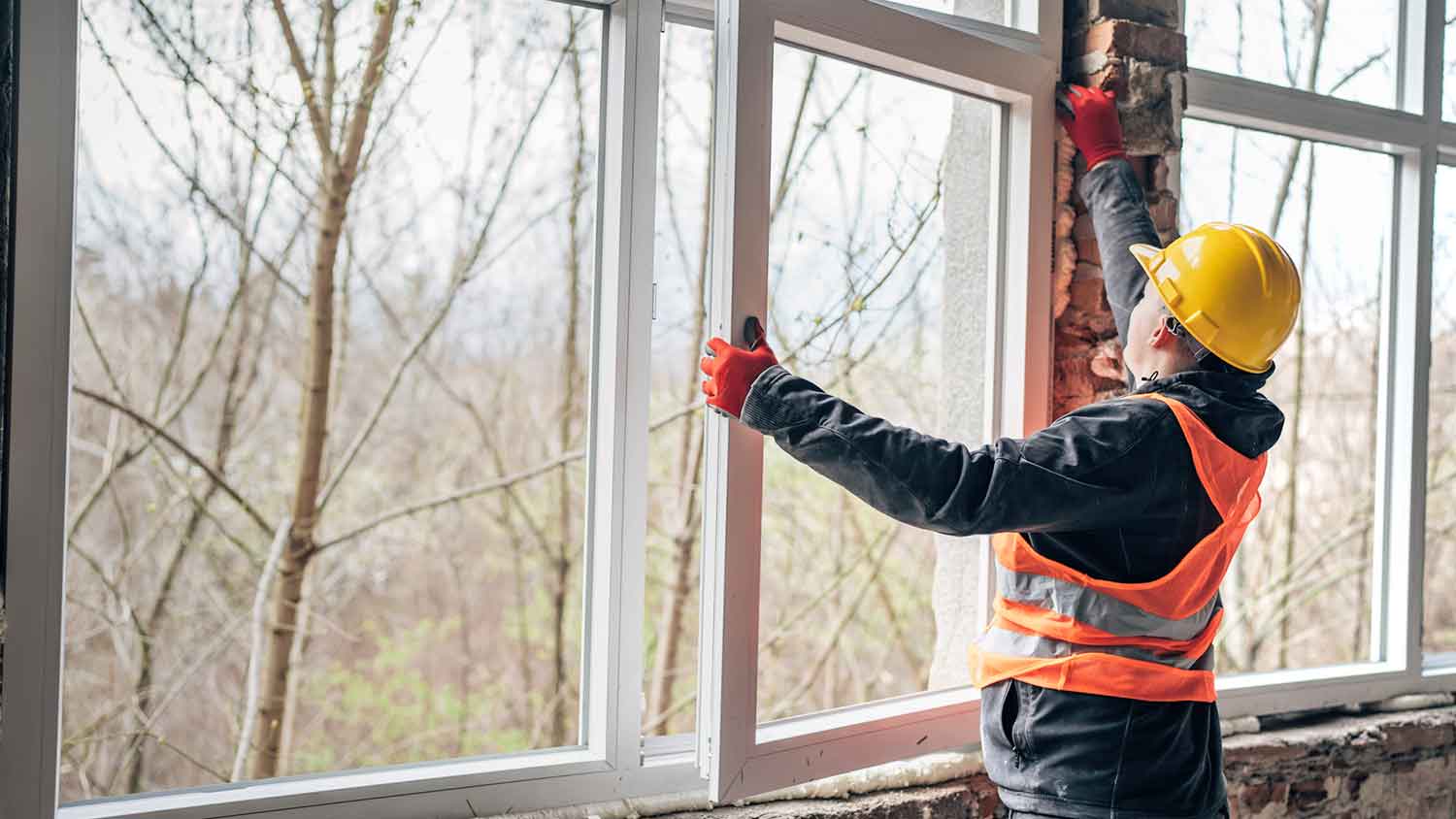
Labor costs for a new window installation depend on the window’s size, the installation complexity, and whether you need any structural modifications. A standard replacement, where a new window fits into an existing opening, is on the lower end of the price range. But if a window needs resizing, framing adjustments, or installation in a new location, costs increase.
Here are some common fees for a new window installation.
Contractors cost: 10%–20% of your overall project cost
Window installer fees: $50–$65 per hour
Cost to hire a carpenter for framing modifications: $75–$125 per hour
Prep
The amount of prep work needed depends on the condition of the home and the scope of the installation. Standard replacements in existing openings require almost no preparation, but projects involving structural modifications, resizing, or older homes require quite a bit of prep, which can increase your costs.
Removing an old window is often included in installation fees, but if not, expect to pay between $50 and $150 to remove it. If the window opening needs to be resized, you should budget for an additional $100 to $500 per window. Upgrading insulation and weatherproofing for better energy efficiency typically costs $30 to $70 per window.
Location
The location of the window within the home impacts labor costs. Ground-floor installations are the most affordable since they require minimal setup. Installing windows on the second story or higher requires ladders, scaffolding, or additional safety equipment, which can increase labor costs by about $50 to $200 per window. In addition, basement or egress windows may require cutting through concrete or masonry, which can add $500 to $1,500 per window.
Ongoing Window Costs
When budgeting for new windows, it helps to consider maintenance and repairs, which can add to your long-term costs. Some materials require frequent upkeep, while others last longer with minimal effort.
Maintenance
The amount of maintenance your windows will need heavily depends on the window material and climate. Vinyl and fiberglass windows require occasional cleanings, while wood windows need regular sealing or painting to prevent rot and warping. Aluminum frames may need corrosion protection in humid or coastal areas. General window maintenance costs can range from $0 to $150 per window per year, depending on the material and level of care needed.
Repairs
Even high-quality windows can develop problems that need repairs. Problems with the seal, which leads to foggy or drafty windows, is one of the most common repair needs and typically costs $100 to $300 per window to fix. Glass replacement can range from $200 to $500 per pane, depending on the glass size and type. Hardware repairs, such as fixing locks or cranks, usually cost $50 to $200 per window.
DIY Window Installation vs. Hiring a Pro
Installing a window yourself can save on labor costs, which typically range from $100 to $600 per window. However, this project requires skill and precision to avoid potentially costly problems, like structural problems, water damage, and long-term efficiency issues, so only handy homeowners with window installation experience should take this on themselves. A basic DIY installation requires materials such as caulk, insulation, flashing, and shims, as well as tools like a level, pry bar, drill, and sealant gun. These supplies can add $100 to $300 to the total cost.
If you’re not confident in your window installation skills, then it’s best to hire a local window installer to ensure the window is installed correctly, sealed properly, and backed by a warranty. Professionals can also complete the job in a fraction of the time—typically within one to two hours for a standard window—while DIYers may spend several hours or even a full weekend on the project.
Cost of Common Window Installation Add-Ons
Many window installation companies offer additional services that can enhance your home’s energy efficiency, security, or aesthetics. Some of these upgrades can be bundled with your window installation for a lower price, so it’s a good idea to take them on at the same time you’re installing the window.
Window trim and casing replacement: $50–$300 per window
Exterior caulking and weatherproofing: $50–$150 per window
Window screen installation or replacement: $50–$500 per window
Shutter installation: $300–$1,300 per window
Blinds installation: $45–$500 per window
How to Save Money on New Windows
Replacing windows can get pricey, but there are several ways to potentially make it more affordable. By considering budget-friendly options and taking on small tasks yourself, you can reduce costs while still getting the windows you need.
Stick to standard sizes and simple styles to save on material and installation costs.
Opt for vinyl frames over wood or aluminum.
Schedule installation during the off-season, like late fall and winter, when some contractors offer lower rates.
Remove curtains, blinds, and nearby furniture yourself to cut down on labor time.
Order all your windows at once to qualify for bulk discounts.
Take advantage of energy-efficient tax credits or local rebates you might receive for installing more energy-efficient windows.
How Angi Gets Its Cost Data
Home is the most important place on earth, which is why Angi has helped more than 150 million homeowners transform their houses into homes they adore. To help homeowners with their next project, Angi provides readers with the most accurate cost data and upholds strict editorial standards. We extensively research project costs to develop the pricing data you see, so you can make the best decisions for you and your home. We rely on reputable sources, including the U.S. Bureau of Labor Statistics, academic journals, market studies, and interviews with industry experts—all to ensure our prices reflect real-world projects.
Want to help us improve our cost data? Send us a recent project quote to costquotes@angi.com. Quotes and personal information will not be shared publicly.
Frequently Asked Questions
Yes, replacing windows can boost your home’s resale value by improving its curb appeal, energy efficiency, and comfort. The return on investment (ROI) varies depending on the types of windows you install, but most homeowners see an ROI of around 60% to 70% of the cost of the window installation, according to the Remodeling 2024 Cost vs. Value Report.
Most standard window installations take about 1 to 2 hours per window, but the total time depends on the number of windows and the complexity of the job. Things like very large or custom windows, second-story installations, and the need to resize openings can extend that time. A full-house replacement usually takes 1 to 3 days to complete.
If your windows are drafty, fogging up between panes, or hard to open or close, it might be time for a replacement. Unexplained increases in your energy bills, rotting frames, broken seals, and noticeable noise from outside can also indicate it’s time for new windows. In addition, if you find yourself frequently needing to repair your windows, it’s probably more cost-effective in the long run to replace them.
If you live in a colder region, consider installing double- or triple-pane windows with low-E coatings, which can trap heat and keep your house warm. In hot areas, windows with reflective coatings and insulated frames help keep cooling costs down. If you experience a lot of extreme weather, then impact-resistant glass might be a worthwhile investment.



